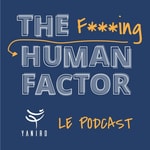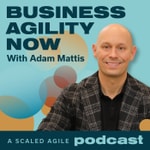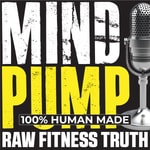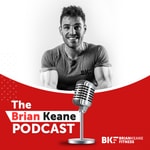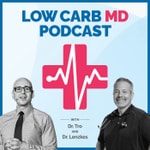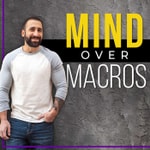The Adaptive Zone – Détails, épisodes et analyse
Détails du podcast
Informations techniques et générales issues du flux RSS du podcast.
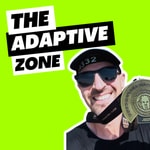
The Adaptive Zone
Matthew Boyd
Fréquence : 1 épisode/11j. Total Éps: 151

Classements récents
Dernières positions dans les classements Apple Podcasts et Spotify.
Apple Podcasts
🇨🇦 Canada - medicine
30/04/2025#100🇬🇧 Grande Bretagne - medicine
05/03/2025#62🇬🇧 Grande Bretagne - medicine
02/03/2025#68🇨🇦 Canada - medicine
03/02/2025#94🇬🇧 Grande Bretagne - medicine
21/12/2024#97🇨🇦 Canada - medicine
19/11/2024#100🇬🇧 Grande Bretagne - medicine
23/09/2024#82
Spotify
Aucun classement récent disponible
Liens partagés entre épisodes et podcasts
Liens présents dans les descriptions d'épisodes et autres podcasts les utilisant également.
See all- https://calendly.com/runsmarter/injurychat
346 partages
- https://matthewboydphysio.com/booking/
177 partages
- https://www.instagram.com/matthewboydphysio
194 partages
- https://www.instagram.com/jasonfitz1
38 partages
- https://www.instagram.com/runsmarterseries
30 partages
Qualité et score du flux RSS
Évaluation technique de la qualité et de la structure du flux RSS.
See allScore global : 33%
Historique des publications
Répartition mensuelle des publications d'épisodes au fil des années.
Why Is My Heart Rate So High on Easy Runs? | Janalee's Story
mercredi 18 septembre 2024 • Durée 24:25
Summary
Janalee Whalen shares her journey with running, from starting as a bucket list item to achieving her goal of running a 10K in under an hour.
She initially struggled with high heart rates and difficulty following heart rate zones, but after working with a coach and recalibrating her heart rate zones, she saw significant improvements in her speed and enjoyment of running.
Janalee's story highlights the importance of personalized heart rate training and the impact it can have on a runner's progress and overall experience.
Takeaways
- Personalized heart rate training can lead to significant improvements in speed and enjoyment of running.
- Calibrating heart rate zones is crucial for accurate training and progress.
- Focusing on specific goals, such as running a 10K in under an hour, can provide motivation and drive for training.
- As runners progress and improve, they may need to adjust their training strategies to continue making gains.
Chapters
- 00:00 Introduction and Background
- 03:10 Struggles with Heart Rate and Training
- 09:59 Frustrations and Seeking Help
- 13:35 Calibrating Heart Rate Zones and Seeing Progress
- 19:52 Deciding on the Next Challenge
- 23:38 The Impact of Personalized Heart Rate Training
Connect with Us:
If you’re an injured runner we can help you get back to running pain-free.
Book a free call with us:
https://matthewboydphysio.com/booking/
Running Fundamentals Course:
https://matthewboydphysio.com/running-fundamentals-course/
Instagram:
Running Injuries Should Be Speed Bumps, Not Roadblocks
mercredi 11 septembre 2024 • Durée 14:33
If you’re an injured runner we can help you get back to running pain-free.
Click the link to book a free call with us
https://matthewboydphysio.com/booking/
Running Fundamentals Course
https://matthewboydphysio.com/running-fundamentals-course/
https://www.instagram.com/matthewboydphysio/
Summary
Running injuries should be speed bumps, not roadblocks.
Despite advancements in research, technology, and training, running injury rates remain high. This is due to the repetitive nature of running and the weakening of the modern human body. However, by focusing on building muscles, strengthening structures, and refining technique, runners can overcome injuries and continue their running journey.
The goal is to make running injuries minor inconveniences that slow us down temporarily, rather than catastrophic events that change the trajectory of our lives.
Takeaways
- Running injury rates are alarmingly high, despite advancements in research and technology.
- The modern human body is weakened and more vulnerable to injuries due to our sedentary lifestyle.
- Focusing on building muscles, strengthening structures, and refining technique can help runners overcome injuries.
- Injuries should be viewed as speed bumps that temporarily slow us down, rather than roadblocks that stop us from running.
How Do You Know What Your Race Pace Should Be?
mercredi 10 juillet 2024 • Durée 16:12
If you’re an injured runner we can help you get back to running pain-free.
Click the link to book a free call with us
https://matthewboydphysio.com/booking/
Running Fundamentals Course
https://matthewboydphysio.com/running-fundamentals-course/
https://www.instagram.com/matthewboydphysio/
Summary
This episode discusses how to determine your race pace for distances you haven't done before or haven't done in a long time. The method described involves doing fast finish long runs in the weeks leading up to the race.
For a 10K, the last 15 minutes of the long run are done at race pace. For a half marathon, the last 30 minutes are done at race pace. And for a marathon, the last 30 minutes of the long run are done at race pace.
The average pace during these fast finish portions is used to estimate the race pace. The episode also emphasizes the importance of pacing during the race and making a decision on whether to speed up or slow down at three-quarters of the race distance.
Takeaways
- To determine your race pace for a new distance, do fast finish long runs in the weeks leading up to the race.
- For a 10K, do the last 15 minutes of the long run at race pace.
- For a half marathon, do the last 30 minutes of the long run at race pace.
- For a marathon, do the last 30 minutes of the long run at race pace.
- Use the average pace during the fast finish portion to estimate your race pace.
- During the race, aim for an even split or a negative split, running the same pace or faster in the second half of the race.
- Make a decision on whether to speed up or slow down at three-quarters of the race distance.
Osteoarthritis Optimism for Runners | E19 with Dr Greg Lehman, Chiropractor, Physiotherapist
Saison 1 · Épisode 19
mercredi 5 mai 2021 • Durée 59:32
"Bad News Hun, the Doc says it's bone on bone..."
Have you been told you should quit running because of hip or knee osteoarthritis (OA)? That it's bone on bone. All that running has caused too much wear and tear?
Well, these aren't very optimistic sentiments, are they? So is this an accurate depiction of the future for runners who develop knee osteoarthritis? My guest today doesn't think so. In fact, he's so sure that we health professionals are giving the wrong message to runners with hip and knee osteoarthritis that he has created a program dedicated to providing a more optimistic outlook for OA. The program is called OA Optimism and Dr. Lehman joins me on the show today to discuss why runners with hip and knee osteoarthritis have good reason to be optimistic.
Click here to read the full show notes
Dr. Greg Lehman is a Physiotherapist, Chiropractor and Strength & Conditioning Specialist. He is a thought leader in the rehabilitation world, famous for his efforts to reconcile the biomechanical and pain science research. Dr. Lehman has taught his two-day course, Reconciling Biomechanics with Pain Science, to health and fitness professionals all over the world. Dr. Lehman is also a renowned Keynote Speaker and I recently had the pleasure to attend his address at the Third World Congress of Sports Physical Therapy in Vancouver. As well as being intellectually challenging, it was also quite hilarious, as Dr. Lehman is also known for his somewhat edgy sense of humor.
Follow Dr. Greg Lehman
- Twitter: @GregLehman
- Instagram: @greglehman
- Linked In: Greg Lehman
- Greg's Blog
- Greg's Online Course
- Greg's Live Courses
Cool stuff mentioned in the show
- OA Optimism Website
- Greg's NAF Physio Podcast
- OARSI Osteoarthritis Rehabilitation Panel Discussion Recording
Would you like your running or triathlon questions featured in a future episode? Just click here to leave me a voicemail.
Music By The Passion HiFi
Runner's Knee and Obesity | E18 with Amanda Schennato
Saison 1 · Épisode 18
mercredi 21 avril 2021 • Durée 41:39
Runner's knee refers to a bunch of different conditions that cause knee pain in runners. However, it is most commonly used in reference to patellofemoral pain. The patella is the kneecap and the femur is the thigh bone. The articulation (joint) between them is the patellofemoral joint. Pain coming from this joint is usually experienced as if the "back of the kneecap" is hurting or as a diffuse (general) pain around the front of the knee. For this reason, it is also sometimes referred to as anterior knee pain.
Unfortunately, many runners are very familiar with this problem. We have quite a bit of research to guide us in the rehabilitation of this condition. Most of the research focuses on load management and strength exercises. However, I recently came across a study that suggested we should also consider whether a higher BMI (body mass index) or obesity could also be a factor. The lead author of the study joins me on the podcast today to discuss her research and her other thoughts on the management of patellofemoral pain (runner's knee).
Amanda Schenatto Ferreira is a Physiotherapist and Ph.D. Candidate focusing on biomechanics and patellofemoral pain at São Paulo State University in Brazil. She recently published a paper entitled Overweight and obesity in young adults with patellofemoral pain: Impact on functional capacity and strength.
Click here to read the full show notes
Follow Amanda:
Instagram: @amandaschenatto
Twitter: @amandaschenatto
Facebook: @amanda.schenatto.3
ResearchGate: Amanda Schenatto Ferreira
Would you like your running or triathlon questions featured in a future episode? Just click here to leave me a voicemail.
Music By The Passion HiFi
Achilles Tendon Pain in Runners | E17 with Myles Murphy, Physiotherapist
Saison 1 · Épisode 17
mercredi 10 mars 2021 • Durée 01:01:08
Achilles tendon pain is one of the most common and persistent running injuries. Many runners experience Achilles tendon pain after particularly long or hard runs. It usually hurts as you start running and then warms up and starts to feel better, only to feel more painful the next day. Achilles tendon pain can often persist for years and years. In response, many runners gradually reduce their running volume or switch to shorter races to “avoid damaging their tendon”.
Myles Murphy is a Sports Physiotherapist and PhD candidate at The University of Notre Dame, Australia. His PhD focus is investigating rehabilitation strategies for Achilles tendon pain (aka Achilles Tendinopathy or Achilles Tendonitis). Myles has done a lot of work reviewing the current evidence on Achilles tendon rehabilitation. He joins me on the show today to help shed some light on the current best-practice for Achilles tendon pain rehabilitation. This episode is packed full of practical advice for runners suffering from Achilles problems.
Click here to check out the full show notes
Would you like your running or triathlon questions featured in a future episode? Just click here to leave me a voicemail.
Follow Myles:
- Twitter @myles_physio
- ResearchGate
Cool Stuff Mentioned in the show:
- La Trobe Sport & Exercise Medicine Research Centre (LASEM) on Facebook @latrobesemrc and Twitter @LaTrobeSEM
Music By The Passion HiFi
Pain does not equal Damage | E16 with Mike Stewart, Physiotherapist
Saison 1 · Épisode 16
mercredi 17 février 2021 • Durée 01:39:05
"If I keep running, will I be causing more damage?"
I think all runners have asked themselves this question at some point. If you have knee pain, and your x-ray shows that you have arthritis, we think that makes sense right? What if your x-ray shows that you have arthritis, but you have no pain at all and you can run as much as you want?
This kind of thing happens all the time. People with scans showing "damage" or "degeneration" but have no pain. How are we to make sense of this?
The difficulty here is that we are talking about pain. While we may think that pain is a fairly straightforward subject, nothing could be further from the truth. Today on the show, Mike Stewart will be joining me to help shed some light on this very confusing and strange subject. Mike has a wonderful gift for taking immensely complicated subjects like pain neuroscience and discussing them in a way that is easy to understand and often quite entertaining. He uses metaphors and stories to explain complex biochemistry and biopsychosocial concepts. If you have not come across Mike before, you will be very glad you did.
Mike is a physiotherapist, researcher and university lecturer with over twenty years experience of helping people to overcome pain. He has an MSc in Education and Physiotherapy and is planning a PhD focusing on how people in pain make sense of their experience.
Mike teaches across a variety of clinical settings including elite sports, and is an advisor on pain management to the International Olympic Committee. Mike has taught his Know Pain courses to over 1000 clinicians in 17 countries all over the world.
Click here to read the full show notes
Follow Mike:
- Website: KnowPain.co.uk
- Facebook: @knowpainmike
- Twitter: @knowpainmike
Cool stuff mentioned in the show:
- Mike's educational booklet: How to turn down the volume on Persistent Pain
- Mike's online course with Embodia: Know Pain: A Practical Guide to Developing Your Patient Education Skills
- Physio Matters Podcast episode: Know Pain: Metaphoric Expression with Mike Stewart
- Physio Edge Podcast episode: Know Pain With Mike Stewart
- Pod Chat Live episode: Mike Stewart [Pain Science]
What is an Anti-Fragile Runner? | E15 with Merv Travers PhD
Saison 1 · Épisode 14
dimanche 24 janvier 2021 • Durée 01:11:02
None of us want to be fragile. Especially not when it comes to running. So what's the opposite of fragile?
"If a glass is fragile, give me an example of something that is not fragile". When Dr Travers asked me I replied "a diamond". If you drop a diamond on the ground, it won't break, but it won't be any stronger for the experience. It's strong, or resilient. However, when we train, we stress our bodies and become stronger for the experience. We're not fragile, we're not even just strong or resilient, we're Anti-Fragile.
This is an important concept to grasp when it comes to training for performance, as well as rehabilitation from injury. It's also a vital concept to understand for health and longevity. On the show today, Dr Merv Travers joins me to help us understand this counter-intuitive idea, and it's far-reaching implications for performance and rehabilitation.
Dr Merv Travers is a Senior Research Scholar working in the area of low back pain, tendon pain and exercise rehabilitation at the School of Physiotherapy, The University of Notre Dame Australia. He completed his PhD at Curtin University where he also maintains an Adjunct Research Fellow role. His teaching areas include anatomy and exercise rehabilitation. He has a Masters of Manipulative Therapy and is a qualified strength & conditioning coach (Australian Strength and Conditioning Association – Level 2).
Merv’s clinical background includes working in professional rugby union and he provides clinical consultation for complex musculoskeletal conditions at Star Physio. Merv guest lectures nationally and internationally on the topics of strength and conditioning for physiotherapists and tendinopathy rehabilitation.
Click here to read the full show notes
Would you like your running or triathlon questions featured in a future episode? Just click here to leave me a voicemail.
Follow Dr Merv Travers:
- OptimiseRehab.com
- Twitter @MervTravers
- Facebook @optimiserehab
- Instagram @optimise_rehab
- Linked In Merv Travers
Cool stuff mentioned in the show:
- The Pelvic Health Podcast episode with Dr Travers: Basics of Strength Training with Dr. Merv Travers
- The JOSPT Podcast episode with Dr Travers Ep 15: An anti-fragile outlook on chronic pain, with Dr Merv Travers (Part 2)
Music By The Passion HiFi
Do the Nike Vaporfly / Alphafly work for Recreational Runners? | E14 with Dr Kim Hébert-Losier PhD
Saison 1 · Épisode 14
lundi 11 janvier 2021 • Durée 01:06:58
The Nike Vaporfly and its descendants, the Next% and Alphafly, have revolutionized the running landscape. In recent years we have seen new world records set in the men's and women's 10k, half-marathon and marathon. Many other elite runners have set personal bests in the now-dubbed "super-shoes". We have multiple independent studies showing improvements in running economy of around 4% on average. With all the disruption, the IAAF has finally had to step in and update their regulations on running shoes.
Now that these "super-shoes" are more widely available, the question on every runner's lips is "will they work for me?". Our guest today has been attempting to answer that question. Dr Hébert-Losier recently published a study in The Journal of Sport and Health Science in which she tested the Nike Vaporfly 4% on a group of recreational runners, like us!
Kim Hébert-Losier is a Senior Lecturer and Researcher in Applied Biomechanics at the University of Waikato, New Zealand. She is also a Physiotherapist and an accomplished runner, having qualified for the Boston Marathon twice. She joins me on the show today to shed a little more light on what these "super-shoes" are, how they work and whether the Nike Vaporfly / Alphafly can really make you a faster runner.
Check out the full show notes here
Would you like your running or triathlon questions featured in a future episode? Just click here to leave me a voicemail.
Cool Stuff mentioned in the show:
- Follow Dr. Hébert-Losier on Twitter @KimHebertLosier
- Keep up with her research at The University of Waikato
- Check out her running courses with The Running Clinic
- Dr. Hébert-Losier's study: Metabolic and performance responses of male runners wearing 3 types of footwear: Nike Vaporfly 4%, Saucony Endorphin racing flats, and their own shoes
- The New York Times analysis of Strava data on the Nike Vaporfly
Further reading and listening:
- Pod Chat Live episode The Nike Shoe Controversy with Alex Hutchinson
- The Real Science of Sport episode The Shoe That Broke Running
- Extra Mile Health article Carbon Fibre Running Trainers: Science behind the super shoes from Dr Chris Bramah
- BJSM editorial Is it the shoes? A proposal to regulate footwear in road running from Geoffrey Burns and Dr Nicholas Tam
Music By The Passion HiFi
How to choose your Running Shoes | E13 with Dr Codi Ramsey PhD
Saison 1 · Épisode 13
lundi 21 décembre 2020 • Durée 01:19:08
What do you consider when buying running shoes? Research shows that most runners think getting the "correct shoe" is important for avoiding injuries. But how do you know if you're in the "correct shoes"?
Dr Codi Ramsey is an expert on running shoes and has been investigating the relationship between shoes and running injuries. Dr Ramsey is the Academic Lead for the Masters of Applied Science program at Otago Polytechnic in New Zealand. She joins me on the show today to discuss the problems we face when trying to use the evidence to make informed decisions about our running shoes. We discussed the difficulty in making strong recommendations based on the current evidence, as well as the problems that have arisen from shoe companies putting the marketing-cart before the research-horse. She also shares some practical tips that runners can use to evaluate shoes right there in the store, before making a purchase.
Click here to read the full show notes
Would you like your running or triathlon questions featured in a future episode? Just click here to leave me a voicemail
Follow Dr Codi Ramsey
Twitter @codiramsey
Research Gate
Cool stuff mentioned in the show
Shoephoria podcast episode with Dr Codi Ramsey
Therapy Live episode with Ian Griffiths of Pod Chat Live, @podchatlive on Facebook
Comfort Filter article (Nigg 2015)
Music By The Passion HiFi
